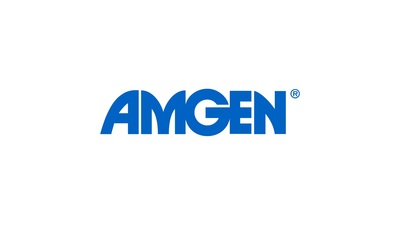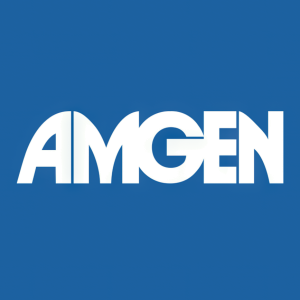AMGEN PRESENTS NEW DATA THAT SHOW BLOOD PRESSURE DECREASES FOR ADULTS TREATED WITH KRYSTEXXA® (PEGLOTICASE)
"As we seek to address the overall burden of uncontrolled gout, especially in those with coexisting chronic kidney disease, it is critical to further understand the benefits of treatment," said Brad Marder, M.D., medical director, nephrology at Amgen. "Recognizing the high prevalence of hypertension among these patients, we're excited to present data that offers new insight into the potential role of urate reduction with KRYSTEXXA with methotrexate in regulating blood pressure."
In the MIRROR randomized controlled trial, 152 adults were randomized 2:1 to receive KRYSTEXXA with methotrexate (n=100) or KRYSTEXXA with placebo (n=52) for 52 weeks. Treatment groups had similar blood pressure prior to treatment. The decrease in systolic blood pressure during treatment was greater at Week 24 of treatment (-6±16 vs. -1±18 mmHg) and more sustained over the full 52-week treatment period in patients receiving KRYSTEXXA with methotrexate than in those receiving KRYSTEXXA with placebo. Compared to those with pre-treatment CKD (eGFR less than 60 ml/min/1.73 m2), patients without pre-treatment CKD had a more pronounced decrease in blood pressure after Week 24 of treatment, with differences persisting through Week 52 of treatment.
"Given the myriad of comorbidities uncontrolled gout patients live with, it is critical that clinicians understand the systemic connections and potential benefits of urate reduction," said Richard J. Johnson, M.D., professor, Division of Renal Diseases and Hypertension, University of Colorado Denver - Anschutz Medical Campus. "These new data add to prior studies and further support the potential role that both KRYSTEXXA urate-lowering and methotrexate administration played in the blood pressure changes observed."
Additional presentations include data from a validated microsimulation model used to project the potential health and economic benefits of effective serum urate reduction in those with both CKD and gout. In patients projected to have oral urate-lowering therapy inefficacy, treatment with KRYSTEXXA was projected to prevent 300,000 cases of uncontrolled gout by 2035 in this vulnerable CKD population.
About KRYSTEXXA® (pegloticase)
KRYSTEXXA® (pegloticase) is the first and only biologic approved by the FDA to treat adults living with uncontrolled gout, a painful and debilitating inflammatory condition with which people continue to have abnormally high levels of uric acid and symptoms despite the use of conventional therapies.
In 2022, the FDA approved expanded labeling to include co-administration with the immunomodulator methotrexate, based on results from the MIRROR randomized controlled trial, which showed significant improvements in efficacy and safety, including a reduction in infusion reactions.
About Uncontrolled Gout
Gout is a chronic, progressive inflammatory form of arthritis that is caused by high urate levels in the body. Tiny needle-like crystals can form and build up almost anywhere in the body. Patients with uncontrolled gout continue to have high levels of uric acid and ongoing symptoms of gout despite the use of oral urate-lowering therapies. Uncontrolled gout is a chronic, systemic disease, and if not addressed can have significant clinical consequences.
INDICATION
KRYSTEXXA® (pegloticase) is indicated for the treatment of chronic gout in adult patients who have failed to normalize serum uric acid and whose signs and symptoms are inadequately controlled with xanthine oxidase inhibitors at the maximum medically appropriate dose or for whom these drugs are contraindicated.
Limitations of Use: KRYSTEXXA is not recommended for the treatment of asymptomatic hyperuricemia.
IMPORTANT SAFETY INFORMATION
WARNING: ANAPHYLAXIS AND INFUSION REACTIONS, G6PD DEFICIENCY ASSOCIATED HEMOLYSIS AND METHEMOGLOBINEMIA
- Anaphylaxis and infusion reactions have been reported to occur during and after administration of KRYSTEXXA.
- Anaphylaxis may occur with any infusion, including a first infusion and generally manifests within 2 hours of the infusion. Delayed hypersensitivity reactions have also been reported.
- KRYSTEXXA should be administered in healthcare settings and by healthcare providers prepared to manage anaphylaxis and infusion reactions.
- Patients should be premedicated with antihistamines and corticosteroids and closely monitored for anaphylaxis for an appropriate period after administration of KRYSTEXXA.
- Serum uric acid levels should be monitored prior to each infusion and treatment discontinued if levels increase to above 6 mg/dL, particularly when 2 consecutive levels above 6 mg/dL are observed.
- Patients at risk for glucose-6-phosphate dehydrogenase (G6PD) deficiency should be screened prior to starting KRYSTEXXA. Hemolysis and methemoglobinemia have been reported with KRYSTEXXA in patients with G6PD deficiency. KRYSTEXXA is contraindicated in patients with G6PD deficiency.
CONTRAINDICATIONS:
- In patients with G6PD deficiency.
- In patients with history of serious hypersensitivity reactions, including anaphylaxis, to KRYSTEXXA or any of its components.
WARNINGS AND PRECAUTIONS
Gout Flares: An increase in gout flares is frequently observed upon initiation of anti-hyperuricemic therapy, including KRYSTEXXA. Gout flare prophylaxis with a non-steroidal anti-inflammatory drug (NSAID) or colchicine is recommended starting at least 1 week before initiation of KRYSTEXXA therapy and lasting at least 6 months, unless medically contraindicated or not tolerated.
Congestive Heart Failure: KRYSTEXXA has not been formally studied in patients with congestive heart failure, but some patients in the pre-marketing placebo-controlled clinical trials experienced exacerbation. Caution should be exercised in patients who have congestive heart failure and patients should be closely monitored following infusion.
ADVERSE REACTIONS
The most commonly reported adverse reactions (≥
- KRYSTEXXA co-administration with methotrexate trial: gout flares, arthralgia, COVID-19, nausea and fatigue; KRYSTEXXA alone: gout flares, arthralgia, COVID-19, nausea, fatigue, infusion reactions, pain in extremity, hypertension and vomiting.
- KRYSTEXXA pre-marketing placebo-controlled trials: gout flares, infusion reactions, nausea, contusion or ecchymosis, nasopharyngitis, constipation, chest pain, anaphylaxis and vomiting.
Please see Full Prescribing Information, including Boxed Warning.
About Amgen
Amgen is committed to unlocking the potential of biology for patients suffering from serious illnesses by discovering, developing, manufacturing and delivering innovative human therapeutics. This approach begins by using tools like advanced human genetics to unravel the complexities of disease and understand the fundamentals of human biology.
Amgen focuses on areas of high unmet medical need and leverages its expertise to strive for solutions that improve health outcomes and dramatically improve people's lives. A biotechnology pioneer since 1980, Amgen has grown to be one of the world's leading independent biotechnology companies, has reached millions of patients around the world and is developing a pipeline of medicines with breakaway potential.
Amgen is one of the 30 companies that comprise the Dow Jones Industrial Average and is also part of the Nasdaq-100 index. In 2023, Amgen was named one of "America's Greatest Workplaces" by Newsweek, one of "America's Climate Leaders" by
For more information, visit Amgen.com and follow us on X (formerly known as Twitter), LinkedIn, Instagram, TikTok, YouTube and Threads.
Amgen Forward-Looking Statements
This news release contains forward-looking statements that are based on the current expectations and beliefs of Amgen. All statements, other than statements of historical fact, are statements that could be deemed forward-looking statements, including any statements on the outcome, benefits and synergies of collaborations, or potential collaborations, with any other company (including BeiGene, Ltd. or Kyowa-Kirin Co., Ltd.), the performance of Otezla® (apremilast) (including anticipated Otezla sales growth and the timing of non-GAAP EPS accretion), the Teneobio, Inc. acquisition, the ChemoCentryx, Inc. acquisition, or the Horizon Therapeutics plc acquisition (including the prospective performance and outlook of Horizon's business, performance and opportunities and any potential strategic benefits, synergies or opportunities expected as a result of such acquisition), as well as estimates of revenues, operating margins, capital expenditures, cash, other financial metrics, expected legal, arbitration, political, regulatory or clinical results or practices, customer and prescriber patterns or practices, reimbursement activities and outcomes, effects of pandemics or other widespread health problems on our business, outcomes, progress, and other such estimates and results. Forward-looking statements involve significant risks and uncertainties, including those discussed below and more fully described in the Securities and Exchange Commission reports filed by Amgen, including our most recent annual report on Form 10-K and any subsequent periodic reports on Form 10-Q and current reports on Form 8-K. Unless otherwise noted, Amgen is providing this information as of the date of news release and does not undertake any obligation to update any forward-looking statements contained in this document as a result of new information, future events or otherwise.
No forward-looking statement can be guaranteed and actual results may differ materially from those we project. Discovery or identification of new product candidates or development of new indications for existing products cannot be guaranteed and movement from concept to product is uncertain; consequently, there can be no guarantee that any particular product candidate or development of a new indication for an existing product will be successful and become a commercial product. Further, preclinical results do not guarantee safe and effective performance of product candidates in humans. The complexity of the human body cannot be perfectly, or sometimes, even adequately modeled by computer or cell culture systems or animal models. The length of time that it takes for us to complete clinical trials and obtain regulatory approval for product marketing has in the past varied and we expect similar variability in the future. Even when clinical trials are successful, regulatory authorities may question the sufficiency for approval of the trial endpoints we have selected. We develop product candidates internally and through licensing collaborations, partnerships and joint ventures. Product candidates that are derived from relationships may be subject to disputes between the parties or may prove to be not as effective or as safe as we may have believed at the time of entering into such relationship. Also, we or others could identify safety, side effects or manufacturing problems with our products, including our devices, after they are on the market.
Our results may be affected by our ability to successfully market both new and existing products domestically and internationally, clinical and regulatory developments involving current and future products, sales growth of recently launched products, competition from other products including biosimilars, difficulties or delays in manufacturing our products and global economic conditions. In addition, sales of our products are affected by pricing pressure, political and public scrutiny and reimbursement policies imposed by third-party payers, including governments, private insurance plans and managed care providers and may be affected by regulatory, clinical and guideline developments and domestic and international trends toward managed care and healthcare cost containment. Furthermore, our research, testing, pricing, marketing and other operations are subject to extensive regulation by domestic and foreign government regulatory authorities. Our business may be impacted by government investigations, litigation and product liability claims. In addition, our business may be impacted by the adoption of new tax legislation or exposure to additional tax liabilities. If we fail to meet the compliance obligations in the corporate integrity agreement between us and the
The scientific information discussed in this news release related to our product candidates is preliminary and investigative. Such product candidates are not approved by the
CONTACT: Amgen,
Kate Meyer, 872-867-0754 (media)
Jessica Akopyan, 805-440-5721 (media)
Justin Claeys, 805-313-9775 (investors)
![]() View original content to download multimedia:https://www.prnewswire.com/news-releases/amgen-presents-new-data-that-show-blood-pressure-decreases-for-adults-treated-with-krystexxa-pegloticase-301974970.html
View original content to download multimedia:https://www.prnewswire.com/news-releases/amgen-presents-new-data-that-show-blood-pressure-decreases-for-adults-treated-with-krystexxa-pegloticase-301974970.html
SOURCE Amgen








